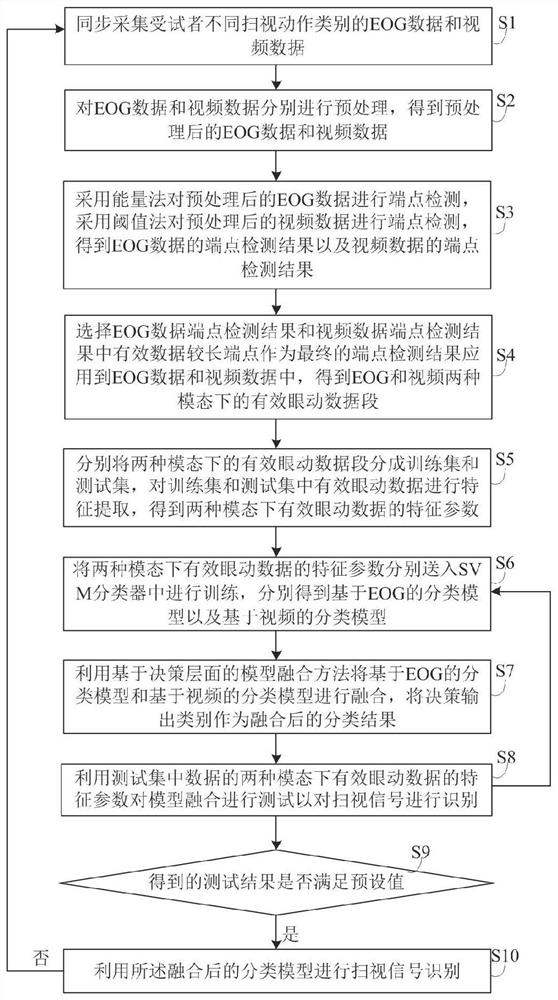A method and system for saccade signal recognition based on fusion of bimodal classification models
A classification model and signal recognition technology, applied in the field of electrooculography, can solve the problems of low accuracy of recognition results, human behavior recognition deviation, optical fiber interference, etc., to avoid weak anti-interference ability, improve signal recognition rate, adaptability strong effect
- Summary
- Abstract
- Description
- Claims
- Application Information
AI Technical Summary
Problems solved by technology
Method used
Image
Examples
Embodiment Construction
[0085] In order to further illustrate the features of the present invention, please refer to the following detailed description and accompanying drawings of the present invention. The accompanying drawings are for reference and description only, and are not intended to limit the protection scope of the present invention.
[0086] Such as figure 1 As shown, this embodiment discloses a glancing signal recognition method based on the fusion of bimodal classification models, which specifically includes the following steps S1 to S10:
[0087] S1. Synchronously collect EOG data and video data of different saccade action categories of the subject;
[0088] Such as figure 2 As shown, the eyeball can be regarded as a bipolar model of the positive pole of the cornea and the negative pole of the retina. The movement of the eyeball can generate an electric potential difference between the cornea and the retina, which is called the corneal-retinal potential difference CRP. Moving and c...
PUM
 Login to View More
Login to View More Abstract
Description
Claims
Application Information
 Login to View More
Login to View More - R&D
- Intellectual Property
- Life Sciences
- Materials
- Tech Scout
- Unparalleled Data Quality
- Higher Quality Content
- 60% Fewer Hallucinations
Browse by: Latest US Patents, China's latest patents, Technical Efficacy Thesaurus, Application Domain, Technology Topic, Popular Technical Reports.
© 2025 PatSnap. All rights reserved.Legal|Privacy policy|Modern Slavery Act Transparency Statement|Sitemap|About US| Contact US: help@patsnap.com



